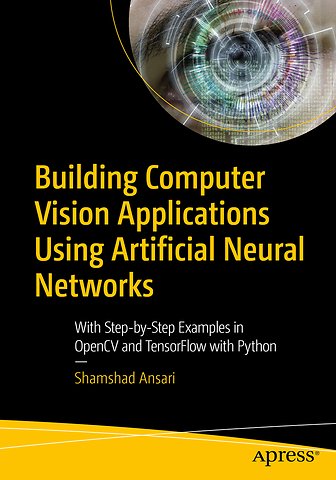Building Computer Vision Applications Using Artificial Neural Networks
With Step-by-Step Examples in OpenCV and TensorFlow with Python
Paperback Engels 2020 9781484258866Samenvatting
Apply computer vision and machine learning concepts in developing business and industrial applications using a practical, step-by-step approach.
The book comprises four main sections starting with setting up your programming environment and configuring your computer with all the prerequisites to run the code examples. Section 1 covers the basics of image and video processing with code examples of how to manipulate and extract useful information from the images. You will mainly use OpenCV with Python to work with examples in this section.
Section 2 describes machine learning and neural network concepts as applied to computer vision. You will learn different algorithms of the neural network, such as convolutional neural network (CNN), region-based convolutional neural network (R-CNN), and YOLO. In this section, you will also learn how to train, tune, and manage neural networks for computer vision. Section 3 provides step-by-step examples of developing business and industrial applications, such as facial recognition in video surveillance and surface defect detection in manufacturing.
The final section is about training neural networks involving a large number of images on cloud infrastructure, such as Amazon AWS, Google Cloud Platform, and Microsoft Azure. It walks you through the process of training distributed neural networks for computer vision on GPU-based cloud infrastructure. By the time you finish reading Building Computer Vision Applications Using Artificial Neural Networks and working through the code examples, you will have developed some real-world use cases of computer vision with deep learning.
What You Will Learn
· Employ image processing, manipulation, and feature extraction techniques
· Work with various deep learning algorithms for computer vision
· Train, manage, and tune hyperparameters of CNNs and object detection models, such as R-CNN, SSD, and YOLO
· Build neural network models using Keras and TensorFlow
· Discover best practices when implementing computer vision applications in business and industry
· Train distributed models on GPU-based cloud infrastructure
Who This Book Is For
Data scientists, analysts, and machine learning and software engineering professionals with Python programming knowledge.
Specificaties
Lezersrecensies
Inhoudsopgave
Rubrieken
- advisering
- algemeen management
- coaching en trainen
- communicatie en media
- economie
- financieel management
- inkoop en logistiek
- internet en social media
- it-management / ict
- juridisch
- leiderschap
- marketing
- mens en maatschappij
- non-profit
- ondernemen
- organisatiekunde
- personal finance
- personeelsmanagement
- persoonlijke effectiviteit
- projectmanagement
- psychologie
- reclame en verkoop
- strategisch management
- verandermanagement
- werk en loopbaan
